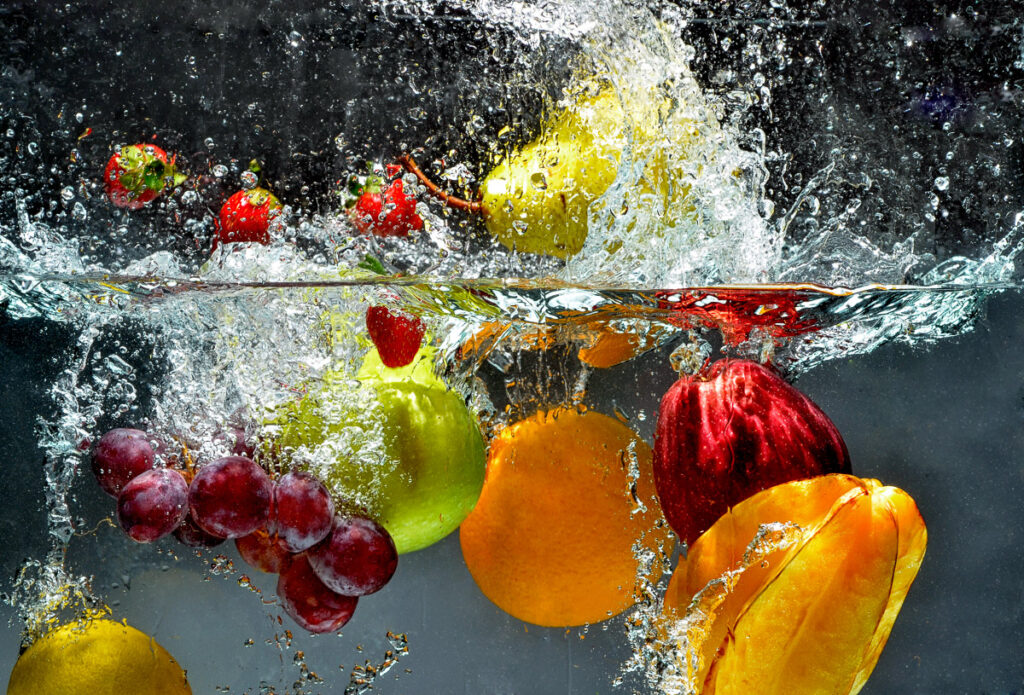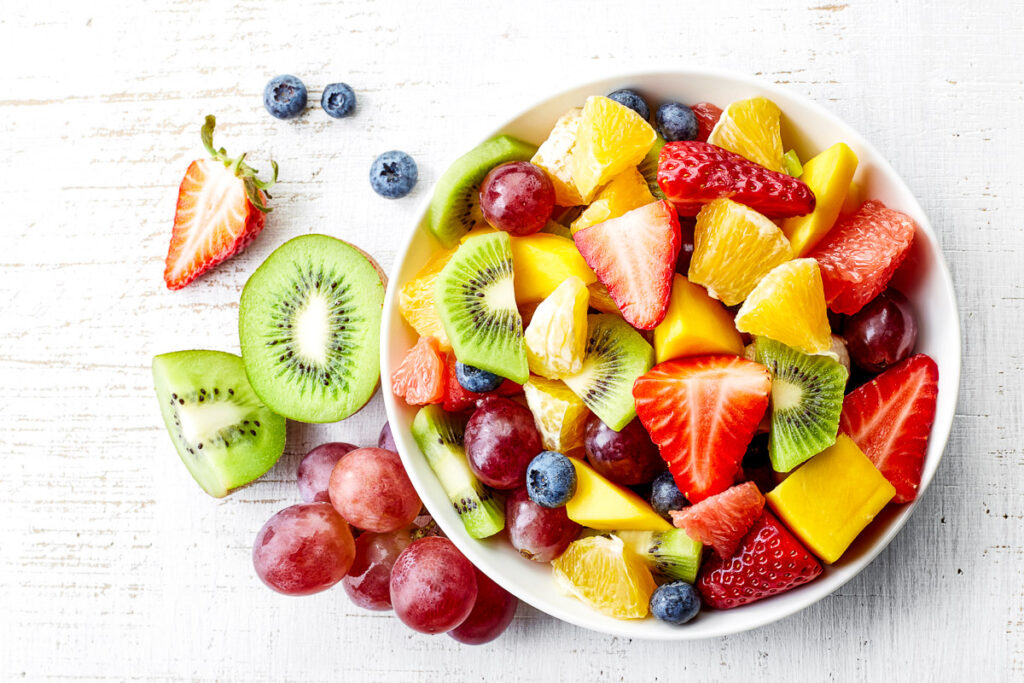Acidulation in the Kitchen: Keeping Fruits Bright and Fresh
Acidulation is a straightforward and effective technique that can benefit every home cook, regardless of experience level. It’s not a complex culinary concept but a practical tip to keep your fruits and vegetables looking as fresh and appealing as possible.

What is Acidulation?
Simply put, acidulation is soaking cut fruits or vegetables in water mixed with a small amount of acid, usually lemon juice or vinegar. This method is beneficial for preventing discoloration or browning in fruits like apples, pears, bananas, and avocados, which tend to oxidize and turn brown when exposed to air.
Why Does Browning Happen?
Browning in fruits occurs due to a natural reaction when the enzymes in the fruit are exposed to oxygen in the air. This reaction leads to the development of melanin, the same pigment that gives color to our skin, causing the fruit to turn brown. While it doesn’t make the fruit harmful to eat, it can be less appealing in appearance.
Choosing the Right Acid
The most commonly used acids are lemon juice and white vinegar. Lemon juice is a popular choice as it has a mild and pleasant flavor that doesn’t overpower the taste of the fruit. White vinegar is also effective, but it’s more suitable for fruits where a slightly tangy taste won’t be an issue.

How to Acidulate Water
To acidulate water, add about one tablespoon of lemon juice or vinegar to a water bowl. Stir it well, and then add your sliced fruits to the mixture. The acidic environment will slow down the oxidation process, keeping your fruits looking fresh for longer.
To effectively acidulate water to prevent the browning of fruits, a good rule of thumb is to add about one tablespoon of acid, such as lemon juice or vinegar, to approximately 4 cups of water. This ratio offers a balanced acidic environment that’s effective for most fruits without being so strong that it significantly alters their taste.
For instance, if you’re preparing a medium-sized bowl of fruit salad, 1 tablespoon of lemon juice in 4 cups of water should be sufficient to cover and protect the fruits. If you’re working with a larger quantity of fruits or a larger bowl, you might need to adjust the proportions accordingly, maintaining the same ratio.
Remember, the key is to stir it well before adding the fruit to the mixture once you add the acid. Also, ensure the fruits are fully submerged in the acidulated water for the best results. After soaking, a quick rinse under cold water can remove any residual acidic taste, leaving your fruits fresh and vibrant for serving.
Tips for Acidulating Different Fruits
The duration for soaking fruits in acidulated water depends on the type of fruit and the intended use. However, a short soak of about 5 to 15 minutes is sufficient to prevent browning in most fruits.
- Apples, pears, and bananas: These fruits benefit from a soak of about 5 to 10 minutes. This is enough time to effectively slow down the browning process without the fruit absorbing too much water or becoming soggy.
- Avocados: Since avocados are more prone to becoming waterlogged, a shorter soak of about 5 minutes is usually adequate to maintain their vibrant green color.
- Other fruits: For fruits less prone to browning or those with a higher water content, a brief dip of 3 to 5 minutes can be enough. This category includes strawberries, raspberries, peaches, nectarines, melons, mangoes, pineapple, kiwi, and grapes.
It’s important to note that the soaking time can vary based on personal preference and the specific requirements of your recipe. The key is to ensure the fruit is fully submerged in the acidulated water for the soak duration.

Rinse before serving
After soaking, drain the fruits so they don’t become waterlogged and give them a quick rinse under cold water before serving or using them in your recipes. Rinsing maintains the fruits’ fresh appearance and natural flavor and removes the risk they could be overly acidic.
Rinsing fruits after soaking them in acidulated water might seem counterintuitive to the extent that any rinsing removes the protective acidic coating that prevents the fruit from turning brown. However, the concern about removing the protective acidic coating by rinsing is generally minimal for the following reasons:
- Short-term protection: Acidulation primarily serves as a temporary solution to prevent browning for a short period, like when prepping ingredients in advance or displaying them. Once the fruits are exposed to air again, even after being rinsed, they will eventually start to brown, but at a slower rate compared to if they hadn’t been acidulated.
- Flavor consideration: Rinsing is recommended primarily to remove any residual acidic taste, especially if a stronger acid like vinegar was used. The goal is to preserve the natural flavor of the fruit without a noticeable taste of lemon or vinegar.
- Effective soaking: The effectiveness of acidulation largely occurs during the soaking period. The acid penetrates the surface of the fruit, altering the pH level at and near the surface where browning occurs. This effect remains to some extent even after rinsing.
So, while rinsing might remove some of the acidic coating, the essential benefit of acidulation – slowing down enzymatic browning – is already achieved during the soaking. Rinsing helps ensure that the fruit maintains its natural flavor when served.

A Natural Approach to Food Presentation
Using acidulated water is a natural way to enhance the appearance of your dishes. Whether you’re preparing a fruit salad for a family gathering or slicing apples for a snack, this simple trick can make your food look more inviting and appetizing.
Acidulation is a quick and easy method that can significantly improve the presentation of your fruits and vegetables. This small step can make a big difference in the kitchen, especially when keeping your food looking its best. Whether a beginner or a seasoned home cook, incorporating this technique into your routine can elevate your cooking game with minimal effort.
Photos are from Deposit Photos.
Edited by Christopher Benoit.
Elizabeth (Beth) Mueller is a food journalist, CEO of Pear Tree Kitchen, and co-creator of Food Blogger Help. She also has a bachelor’s degree in philosophy and a registered nurse licensed in the State of Oklahoma. When she has free time between writing, blogging, and cooking, she can be found volunteering as an RN with the Oklahoma Medical Reserve Corps.

